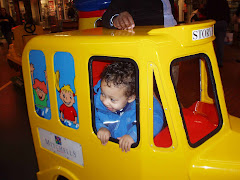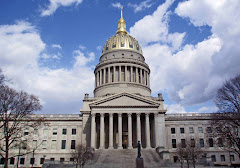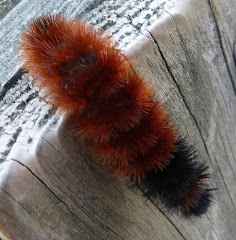An Afternoon in Lewisburg WV
 We took a break from our chores in mid-morning and went up to Lewisburg to see a few things we had never really stopped to view before. Our journey revolved around one building we had been by, and in, many times, the Greenbrier County Courthouse (above). It dates from 1837 with later additions. While it is not as spectacular as other county courthouses we have seen, still it is good looking. And while it is probably not the oldest in the country, it is still way up there.
We took a break from our chores in mid-morning and went up to Lewisburg to see a few things we had never really stopped to view before. Our journey revolved around one building we had been by, and in, many times, the Greenbrier County Courthouse (above). It dates from 1837 with later additions. While it is not as spectacular as other county courthouses we have seen, still it is good looking. And while it is probably not the oldest in the country, it is still way up there.Our first stop was
 at the General Andrew Lewis Park. The park area contains several spots that date back to the late Colonial, early Federal, part of our history.
at the General Andrew Lewis Park. The park area contains several spots that date back to the late Colonial, early Federal, part of our history.Prominently situated against the hill
 right beneath the Courthouse, is the old 1785 Spring House(right). It was the prescence of this spring that first brought settlers into this area. Then known as Fort Union, or Fort Savannah, or Savannah or several other names depending upon who you talk to.
right beneath the Courthouse, is the old 1785 Spring House(right). It was the prescence of this spring that first brought settlers into this area. Then known as Fort Union, or Fort Savannah, or Savannah or several other names depending upon who you talk to.Up the hill away from the courthouse is a bronze marker noting tha
 t this area was the rendevous point for the Colonial Militia who gathered under General Andrew Lewis to begin their march to Pt. Pleasant (pictured below). This march which occurred in the fall of
t this area was the rendevous point for the Colonial Militia who gathered under General Andrew Lewis to begin their march to Pt. Pleasant (pictured below). This march which occurred in the fall of  1774 was part of an military affair known as "Lord Dunmore's War." This "War" is either considered to be the last desparate battle connected with the French and Indian War, or the first "war" of the Revolution. Naturally, the town of Point Pleasant WV has gotten Congress to say it is the first "battle of the Revolution." But that just shows how cock-eyed politicans can be. Anyway, the object of their march, the confluence of the Kanawha and Ohio Rivers is now Tu-Endie-Wei State Park.
1774 was part of an military affair known as "Lord Dunmore's War." This "War" is either considered to be the last desparate battle connected with the French and Indian War, or the first "war" of the Revolution. Naturally, the town of Point Pleasant WV has gotten Congress to say it is the first "battle of the Revolution." But that just shows how cock-eyed politicans can be. Anyway, the object of their march, the confluence of the Kanawha and Ohio Rivers is now Tu-Endie-Wei State Park.The militia gathered (including some of GrandMom's ancestors) and they marched out west and defeated Chief Cornstalk. This victory by the militia should have resulted in a great celebration. Unfortunately, Lord Dunmore, then the Colonial Governor of Virginia, marched with a separate force by a more northerly route, and concluded a separate peace treaty with the Shawnee Tribes. This peace treaty did not set well with the Colonials, and convinced them that Great Britain was not a "friend."
Patrick Henry among others preyed upon this feeling of distrust towards both Great Britain and Lord Dunmore, and the rest, as they say, is history.
Also in the park is a building erected during the "secon
 d American War for Independence" also known as the War of 1812. It is called "The Barracks" and was used as a local storehouse for arms and ammunition for the settlers to use against the Native American Attacks they sure were coming. Thankfully, there was not much fighting in West Virginia during that conflict and so the building was not used much.
d American War for Independence" also known as the War of 1812. It is called "The Barracks" and was used as a local storehouse for arms and ammunition for the settlers to use against the Native American Attacks they sure were coming. Thankfully, there was not much fighting in West Virginia during that conflict and so the building was not used much.







No comments:
Post a Comment